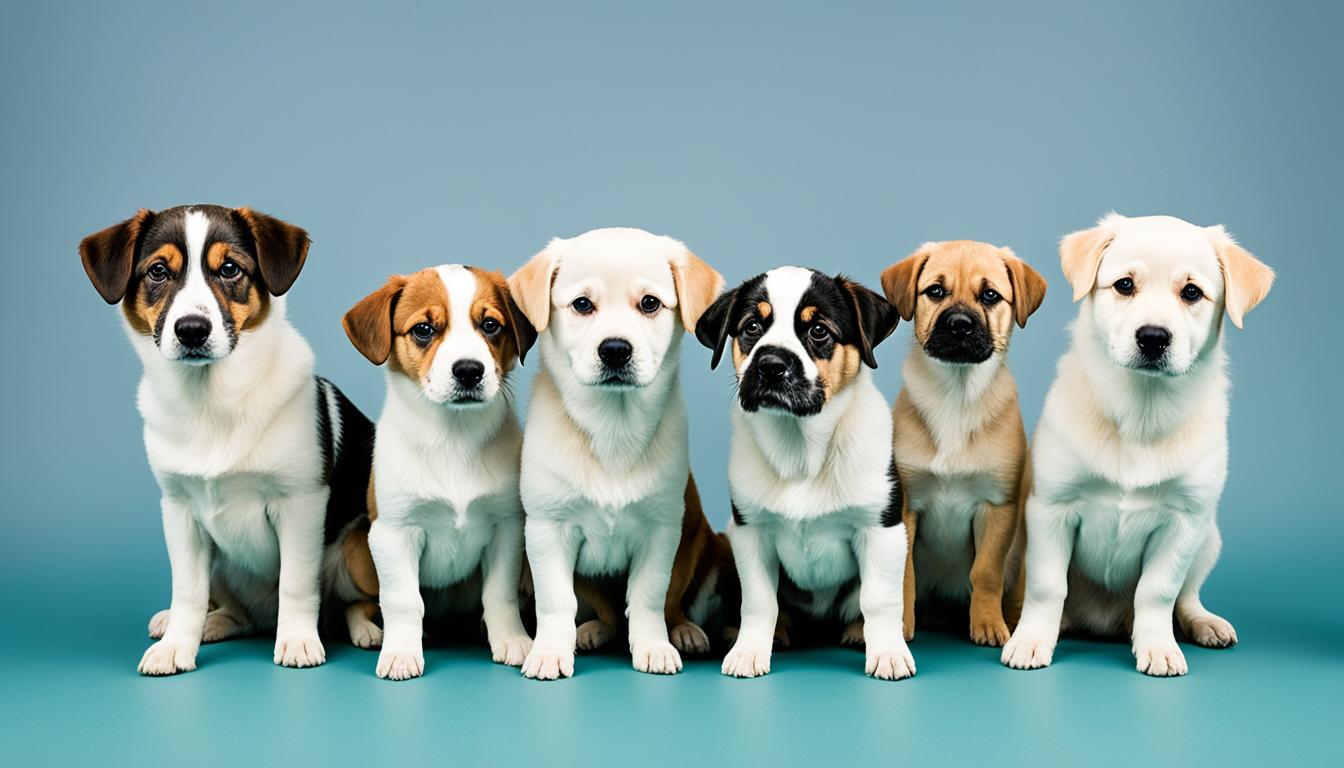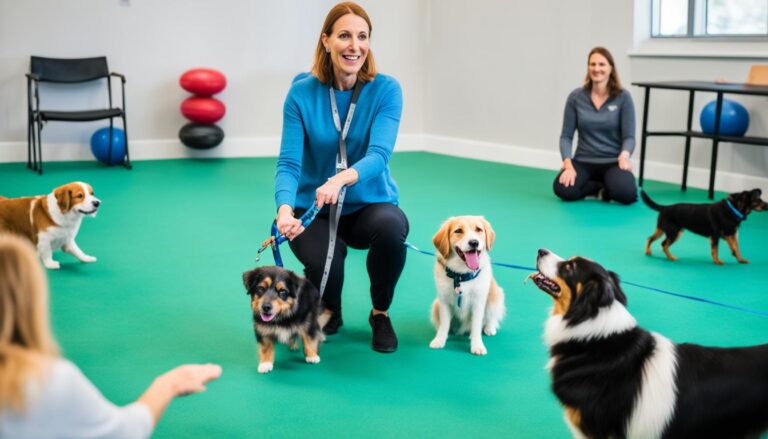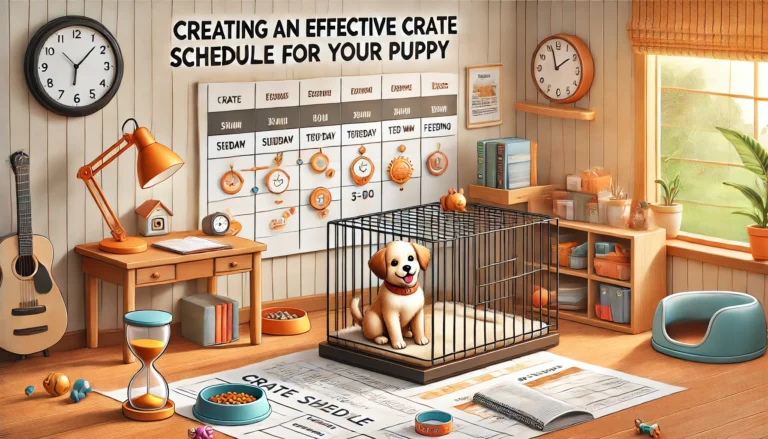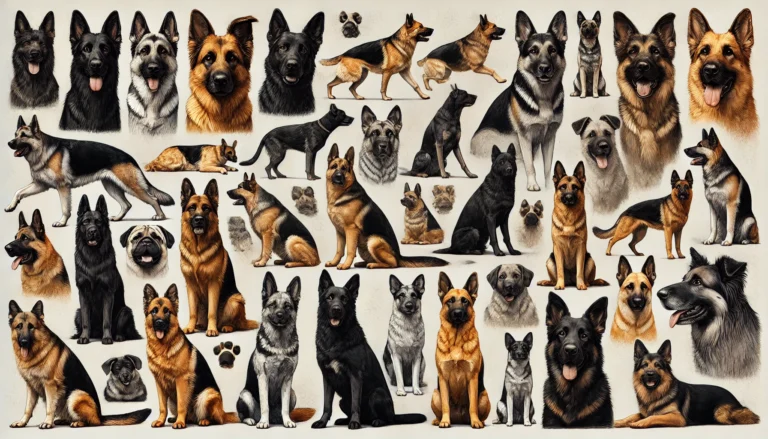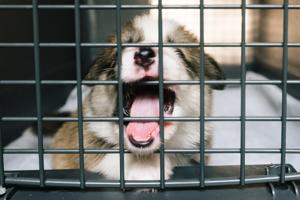how dog breeding works
Ever wondered how we got so many dog breeds, from tiny Chihuahuas to big Great Danes? Dog breeding is the key. It’s all about picking the right parents, knowing about genetics, and caring for the dogs’ health and well-being.
Dog breeding has been around since ancient times. It has led to hundreds of dog breeds through careful selection1. Breeders need to know a lot about dog genetics, health, and what the dogs will be used for. They pick the right parents, the dam and sire, to make puppies with certain traits.
The process of mating dogs is complex. It starts with picking the right parents and ends with puppies. Breeders must think about the dog’s cycle, how long pregnancy lasts, and how to care for the mom and her puppies123.
Good dog breeding is more than just making puppies. It’s about making breeds better, understanding dog genetics, and keeping the parents and puppies healthy2. This work is hard, costly, and sometimes tough. But it’s key to keeping our dogs diverse and loving.
Key Takeaways
- Dog breeding involves intentional mating to produce specific traits
- The process requires knowledge of canine genetics and health
- Female dogs (dams) and male dogs (sires) are carefully selected
- Responsible breeding focuses on improving breed quality
- The journey from mating to puppy birth is complex and requires careful management
Understanding the Basics of Dog Breeding
Dog breeding is a complex process that goes way back. It started around 20,000 to 40,000 years ago, when dogs first became pets4. Now, there are over 400 different dog breeds around the world for breeding5.
The Science Behind Canine Genetics
Canine genetics is key to dog breeding. Breeders need to know about dominant and recessive traits. Some diseases, like Exercise-Induced Collapse in Labradors, have tests. But others, like hip dysplasia, don’t have one test, making choices harder6.
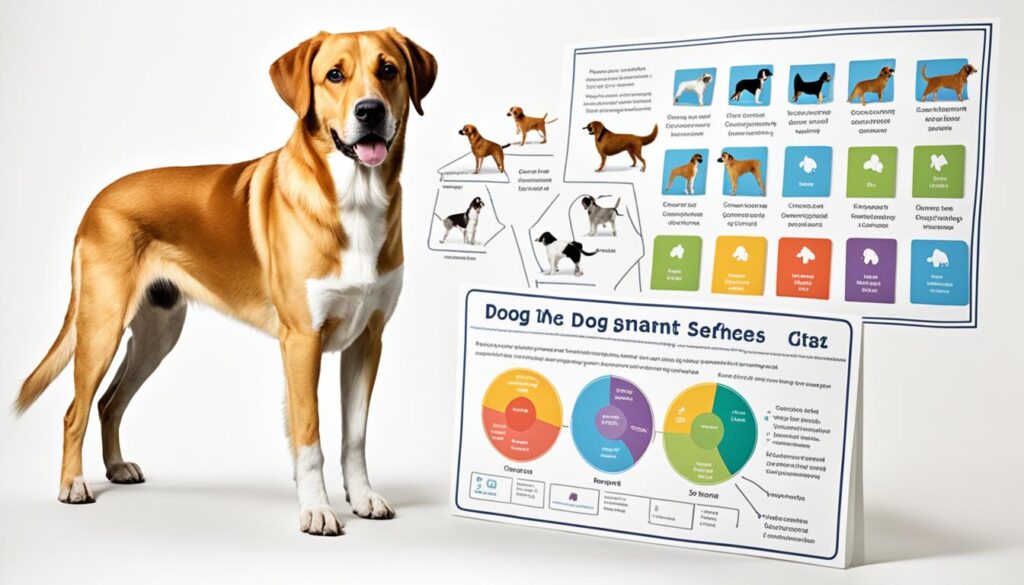
Selecting Breeding Pairs for Desired Traits
Choosing the right dogs to breed is a big deal. Dogs become ready to breed between 7-10 months old5. Breeders watch for when female dogs are ready, which is every 6 months5. The best time to breed is between the 10th and 14th day of their cycle5.
The Role of Kennel Clubs and Breed Standards
Kennel clubs and breed standards help breeders keep breeds true to type. They stress the need for health checks. Breeders should test for hip and elbow dysplasia, eye problems, and heart issues5. Joining dog registries and clubs gives breeders resources and helps find good mates with health checks4.
Good breeding is more than just genetics. It means giving puppies early training and social skills. This makes them confident and easy to train5. The best time for socializing dogs is from 3 to 14 weeks old4. Knowing these basics helps breeders make a positive impact on future dogs.
The Canine Reproductive Cycle
Understanding dog reproduction is key for responsible breeding. The canine estrous cycle, also known as a heat cycle, is vital for dog breeding. It lasts 18 to 21 days and has four main stages7.

Female dogs become ready to breed around six months old. But, this can change based on the breed. Smaller breeds start their first cycle early, while big breeds may wait 18 months to two years8.
The canine estrous cycle has four stages:
- Proestrus: This stage lasts about 9 days and shows through swelling and bleeding7.
- Estrus: This is when the female is ready to breed, lasting 5 to 9 days9.
- Diestrus: This stage peaks 2-3 weeks after breeding and can last 60 to 90 days if there’s no pregnancy97.
- Anestrus: This is the resting period between cycles.
Most dogs have two heat cycles a year, happening every 5-11 months. But, some breeds like the Basenji may only cycle once a year9.
| Breed Size | Average Age at First Heat | Typical Cycle Frequency |
|---|---|---|
| Small | 6-8 months | 3 times per year |
| Medium | 8-12 months | 2 times per year |
| Large | 12-18 months | 1-2 times per year |
| Giant | 18-24 months | Once per year |
Female dogs can get pregnant on their first estrous cycle. That’s why many vets suggest spaying before the first heat to stop accidental breeding897.
How Dog Breeding Works: Step-by-Step Process
Dog breeding is a detailed process. It needs careful planning and attention. We’ll take you through each step, from getting ready to caring for newborn puppies.
Preparing for Breeding
First, make sure both dogs are healthy. The female dog, or dam, has a heat cycle every seven months10. Breeders wait for her third cycle, around 18 months old, to breed. This ensures they are fully grown physically and mentally11.
Mating and Conception
The mating happens when the female is in heat and ready. This is when her progesterone levels are high, showing ovulation. Breeding can take from 45 minutes to over an hour11. After, the dogs may stay together for 10-30 minutes as the male finishes11.
Pregnancy and Gestation
During pregnancy, the pregnant dog needs good food. She should gain 5-10% of her pre-pregnancy weight by the whelping time10. Regular vet visits and a balanced diet keep the dam and her puppies healthy.
Whelping and Puppy Care
Get ready for the whelping by setting up a cozy box. In the first 24 hours, puppies need colostrum for protection10. After that, care for them by keeping them warm, feeding them well, and keeping their area clean.
| Breeding Stage | Key Points |
|---|---|
| Preparation | Health checks, wait for 3rd heat cycle |
| Mating | Occurs during heat, can last 45+ minutes |
| Pregnancy | 5-10% weight gain, regular vet visits |
| Whelping | Prepare whelping box, ensure colostrum intake |
For new puppy owners, reusable pee pads are a good idea. They have high ratings from over 100,000 dog owners and can save up to $400 a year over disposable ones12.
Health Considerations in Dog Breeding
In ethical dog breeding, health is key. We focus on keeping parent dogs and their puppies healthy. Breeders choose health, welfare, and temperament over looks to protect everyone’s well-being13.
Pre-Breeding Health Screenings
Before breeding, dogs get checked by vets to be healthy and free of diseases14. They check for hip and elbow dysplasia in big dogs15. Eye tests are also done to catch problems like cataracts early15.
Genetic Testing for Hereditary Conditions
Testing with DNA helps find dogs that might pass on diseases to their puppies15. This follows rules to lower genetic problems in dogs. Breeders look at health and behavior history to pick the best parents14.
Nutrition and Care During Pregnancy
Good food and care are important for pregnant dogs and their puppies. Breeders save money for emergencies14. New tech in 2024 will help track dog health during pregnancy and predict when puppies will be born15. This tech will help keep breeding dogs and their puppies healthy.
FAQ
What is dog breeding?
What is the role of canine genetics in dog breeding?
What is the canine estrous cycle?
What are the steps involved in the dog breeding process?
What health considerations are important in dog breeding?
What role do kennel clubs play in dog breeding?
Source Links
- https://en.wikipedia.org/wiki/Dog_breeding – Dog breeding
- https://www.akc.org/breeder-programs/breeder-education/akcs-guide-responsible-dog-breeding/ – No title found
- https://www.thekennelclub.org.uk/dog-breeding/first-time-breeders/ – First time breeders | Dog breeding
- https://www.dogster.com/dog-health-care/responsible-dog-breeding-facts – Responsible Dog Breeding Facts & Basics: 10 Vet-Approved Tips – Dogster
- https://studdogsonline.com/dog-breeding-for-beginners/ – Dog Breeding For Beginners – How to Breed Dogs 10 Best Tips
- https://www.akcchf.org/educational-resources/library/articles/a-dog-breeding-roundtable.html – AKC Canine Health Foundation | A Dog Breeding Roundtable with Veterinary Theriogenology Residents
- https://www.britannica.com/animal/dog/Reproductive-cycle – Dog – Reproduction, Heat Cycle, Breeding
- https://vcahospitals.com/know-your-pet/estrus-cycles-in-dogs – Estrous Cycles in Dogs | VCA Animal Hospitals
- https://www.vet.cornell.edu/departments-centers-and-institutes/riney-canine-health-center/canine-health-information/dog-estrous-cycles – Dog estrous cycles
- https://www.akc.org/expert-advice/dog-breeding/dog-breeding-tips-for-beginners/ – No title found
- https://www.wikihow.com/Get-Dogs-to-Mate – How to Get Dogs to Mate: Dog Breeding Made Easy
- https://pottybuddy.co/blogs/potty-buddy-blog/dog-breeding-for-beginners – Dog Breeding for Beginners
- https://www.rspca.org.uk/adviceandwelfare/pets/dogs/puppy/pedigreedogs/health – Pedigree dogs health problems | RSPCA – RSPCA – rspca.org.uk
- https://www.texvetpets.org/article/responsible-dog-breeding/ – Responsible Dog Breeding | Canine Health and Reproduction
- https://petpace.com/the-importance-of-health-testing-for-dog-breeding/ – The Importance of Health Testing for Dog Breeding – PetPace

